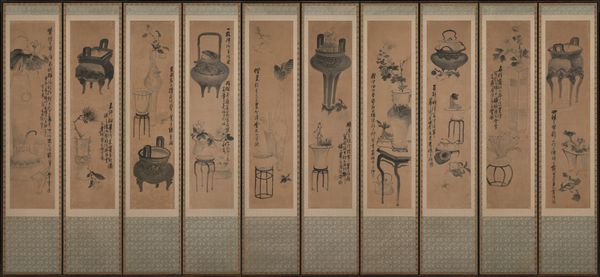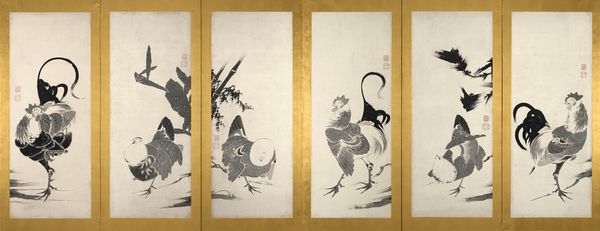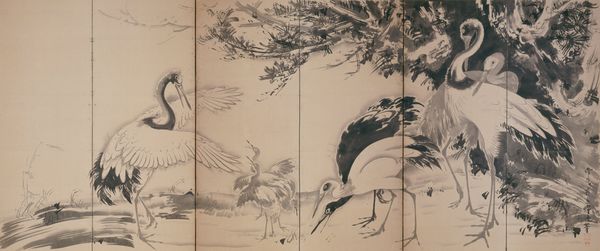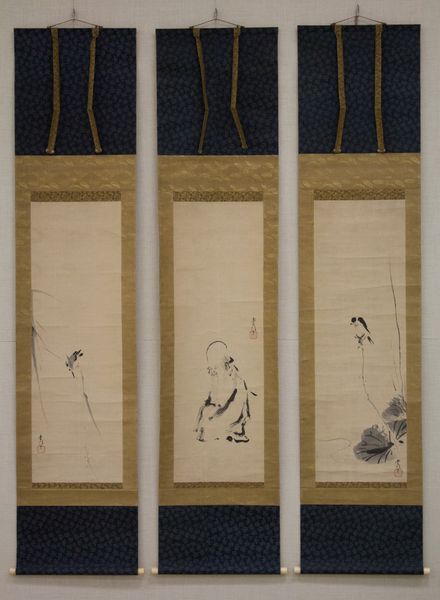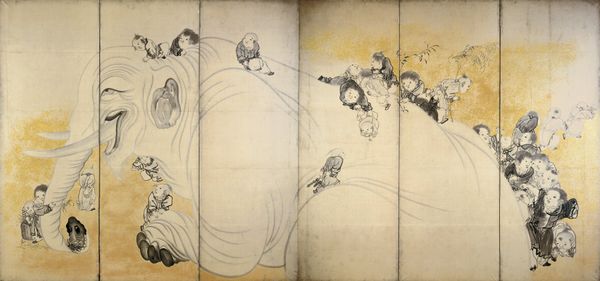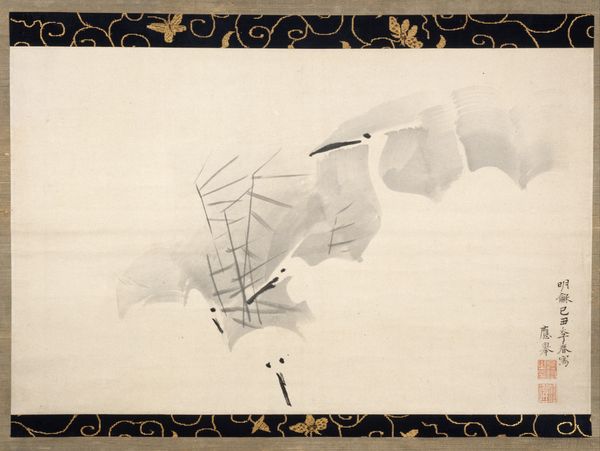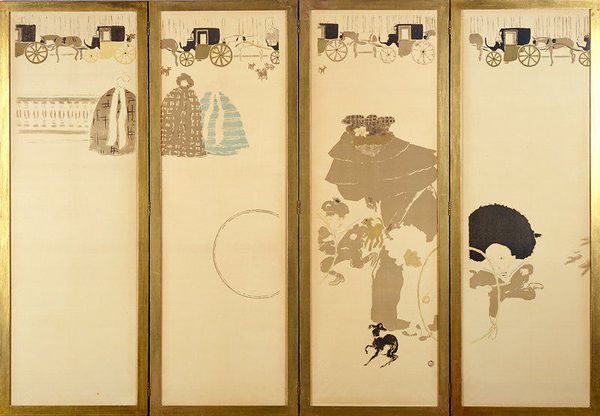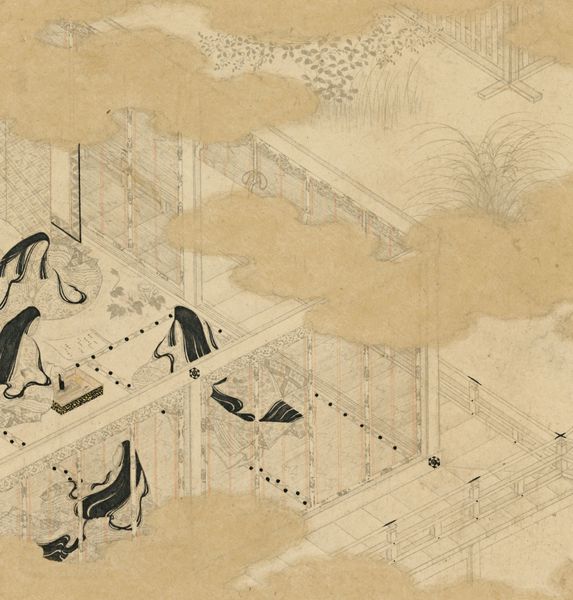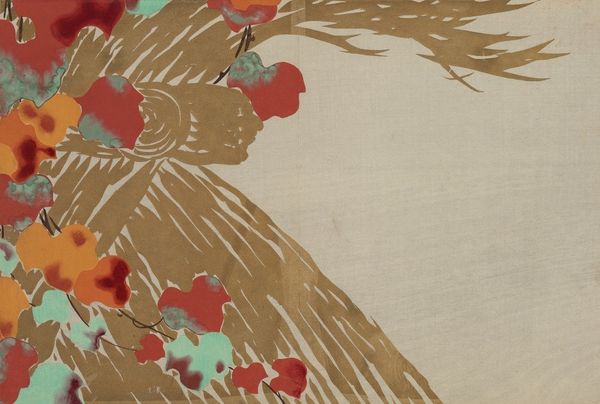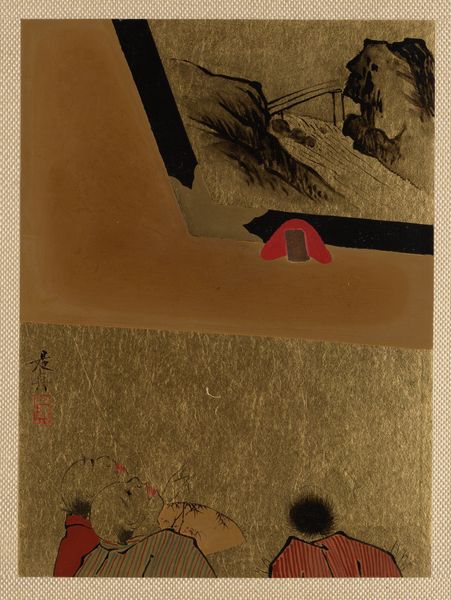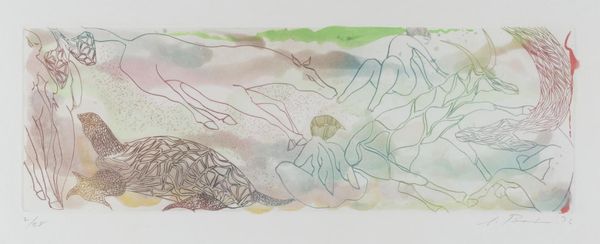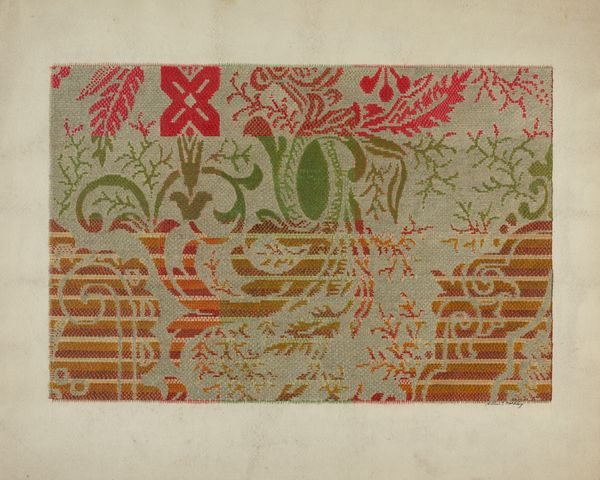![Roosters and Hens [right of a pair] by Ito Jakuchu](/_next/image?url=https%3A%2F%2Fd2w8kbdekdi1gv.cloudfront.net%2FeyJidWNrZXQiOiAiYXJ0ZXJhLWltYWdlcy1idWNrZXQiLCAia2V5IjogImFydHdvcmtzLzRiYmJhZmQwLTZkOGQtNGFmNy1iOWVhLWFjZmVhZWM5ZWQ5MS80YmJiYWZkMC02ZDhkLTRhZjctYjllYS1hY2ZlYWVjOWVkOTFfZnVsbC5qcGciLCAiZWRpdHMiOiB7InJlc2l6ZSI6IHsid2lkdGgiOiAxOTIwLCAiaGVpZ2h0IjogMTkyMCwgImZpdCI6ICJpbnNpZGUifX19&w=3840&q=75)
paper, ink-on-paper, ink
#
animal
#
asian-art
#
paper
#
ink-on-paper
#
ink
#
realism
Dimensions: 66 × 146 1/2 × 3/4 in. (167.64 × 372.11 × 1.91 cm) (outer frame)50 × 19 1/2 in. (127 × 49.53 cm) (image)50 × 117 in. (127 × 297.18 cm)
Copyright: Public Domain
Editor: Here we have Ito Jakuchu's "Roosters and Hens," which dates back to the 18th century. It's ink on paper, part of a larger pair. What strikes me is the incredibly lifelike depiction, especially considering the limited palette. What do you see in this piece, especially regarding symbolism? Curator: Jakuchu's roosters and hens aren't just barnyard fowl; they are laden with symbolism rooted in Japanese and Chinese cultural memory. Roosters, across East Asia, symbolize vigilance, courage, and good luck, their daily crow a ward against evil. They also stand for the yang principle, the active, masculine force. Now, consider the hens alongside – what might they represent in contrast? Editor: Perhaps the yin, the feminine and passive? The balance, maybe? Curator: Precisely! It's about harmony, isn’t it? Fertility and domesticity are intertwined. Note, too, how Jakuchu meticulously renders each feather, each eye. He captures their essential “chicken-ness,” yes, but on a deeper level he is conjuring their totemic qualities. Think about what it meant, living in 18th century Japan, where the natural world wasn’t something separate from humans, but deeply connected and spiritually charged. The animals and plants possessed power. Does knowing this change how you see it? Editor: It definitely adds a new layer. It’s more than just a painting; it's a representation of universal balance. Curator: And a reminder of how deeply images, even of ordinary things, are woven into the fabric of culture. Editor: I’ll certainly look at roosters differently now.
Comments
minneapolisinstituteofart over 1 year ago
⋮
This pair of folding screens features twelve individual compositions, each pasted onto its own panel, a format known as an oshiebari screen. Each painting shows either a rooster or a hen (look out for two chicks hidden in one picture). Overlaid brushstrokes in varied ink tones capture the details of feathers and combs. Against white paper marked with only the briefest suggestions of natural settings—cactus, bamboo, pine tree, banana plant, willow tree—the birds’ flamboyant poses and dramatic plumage stand out. Chickens were the favorite subject of Itō Jakuchū, one the best-known painters in Kyoto in the 1700s.
Join the conversation
Join millions of artists and users on Artera today and experience the ultimate creative platform.
